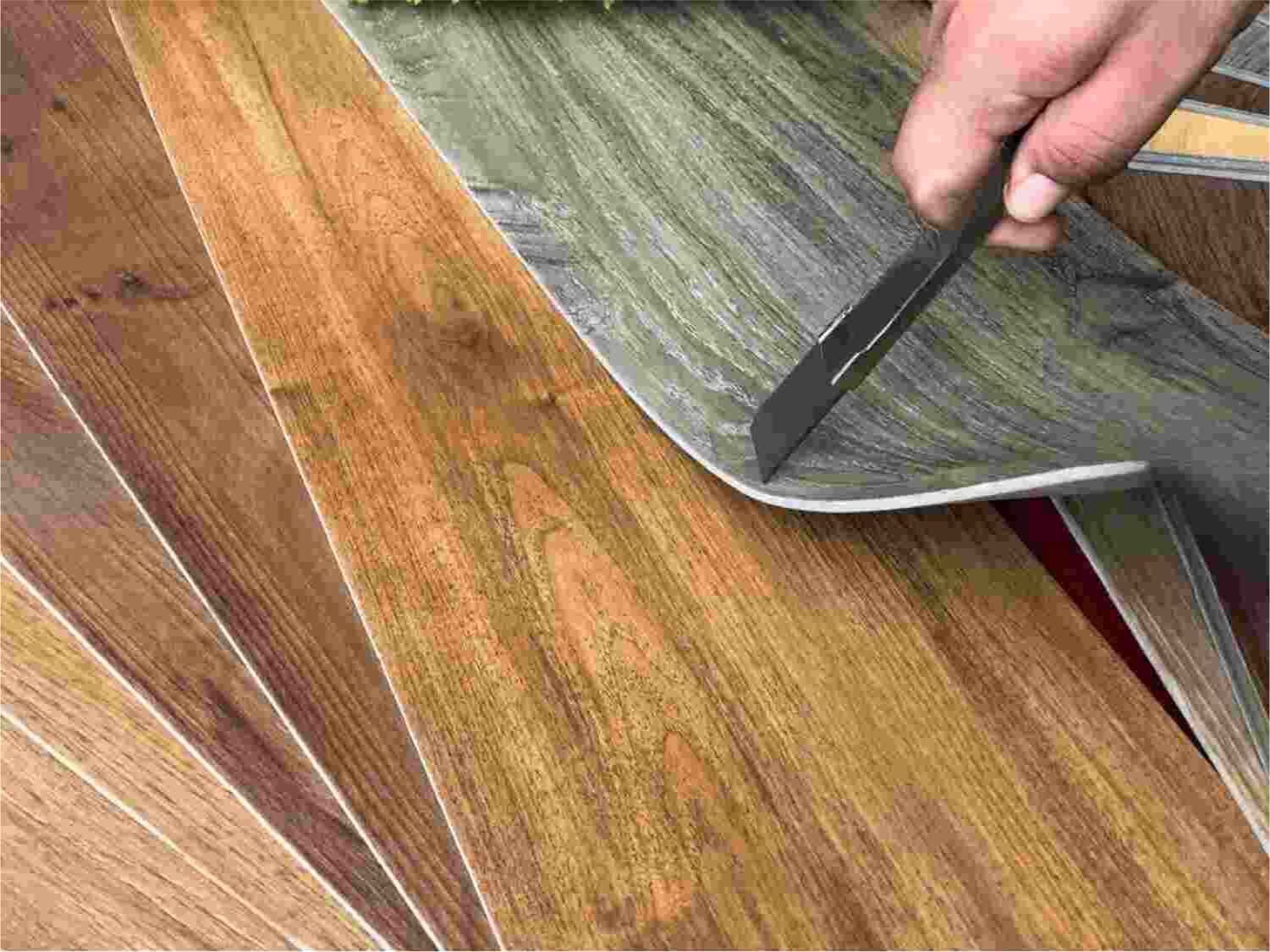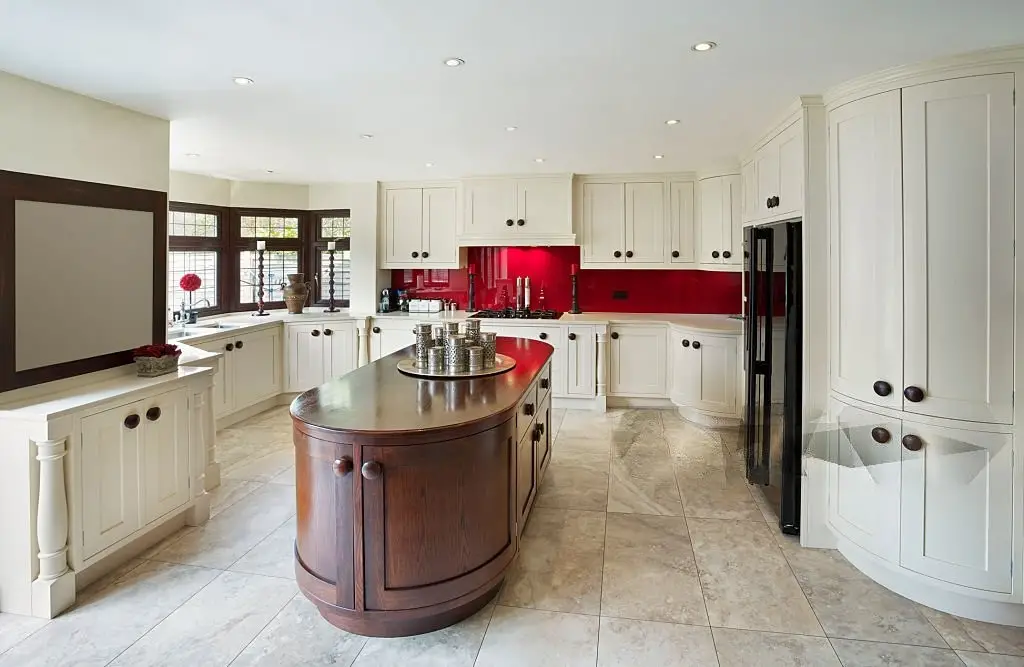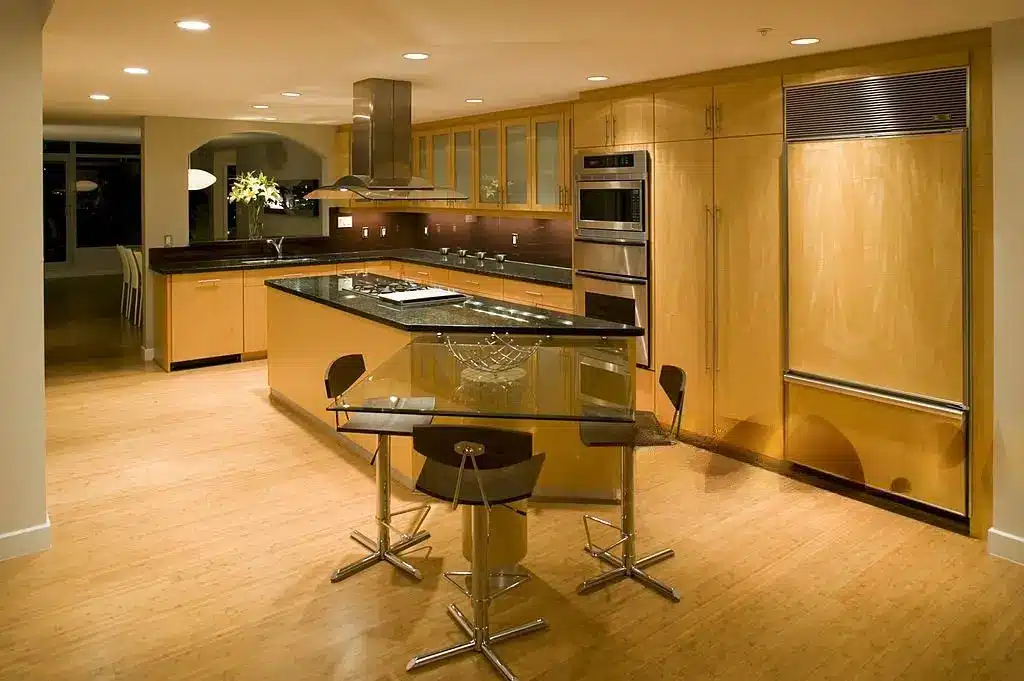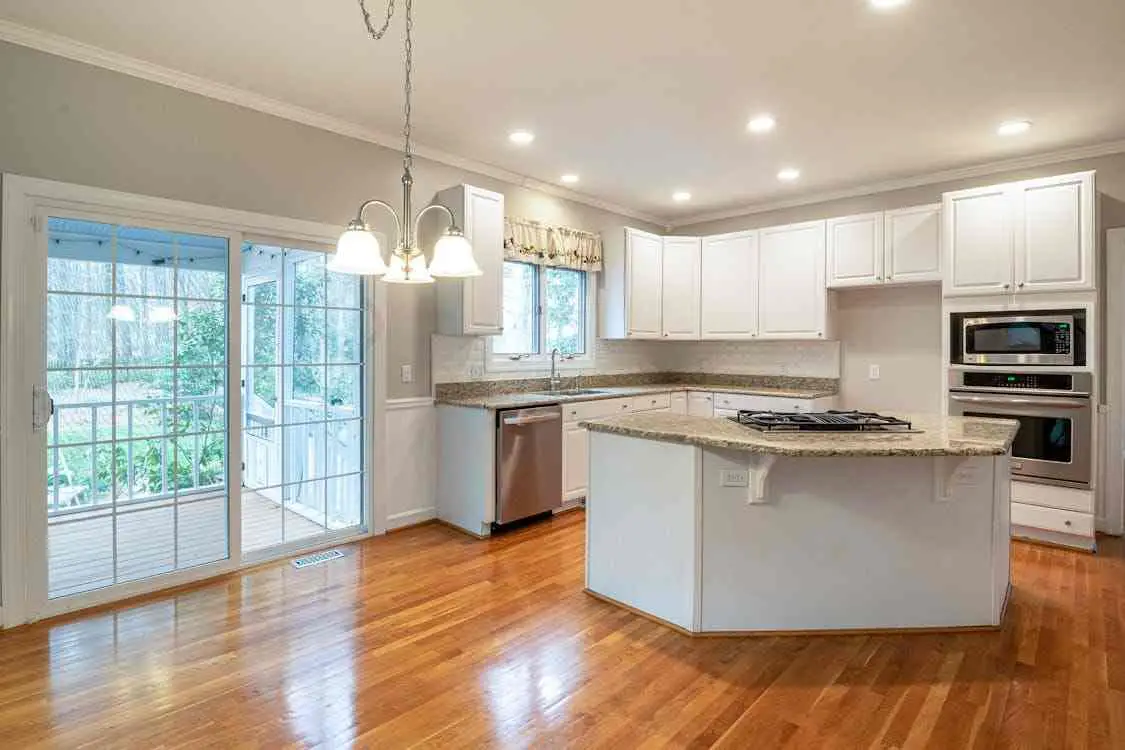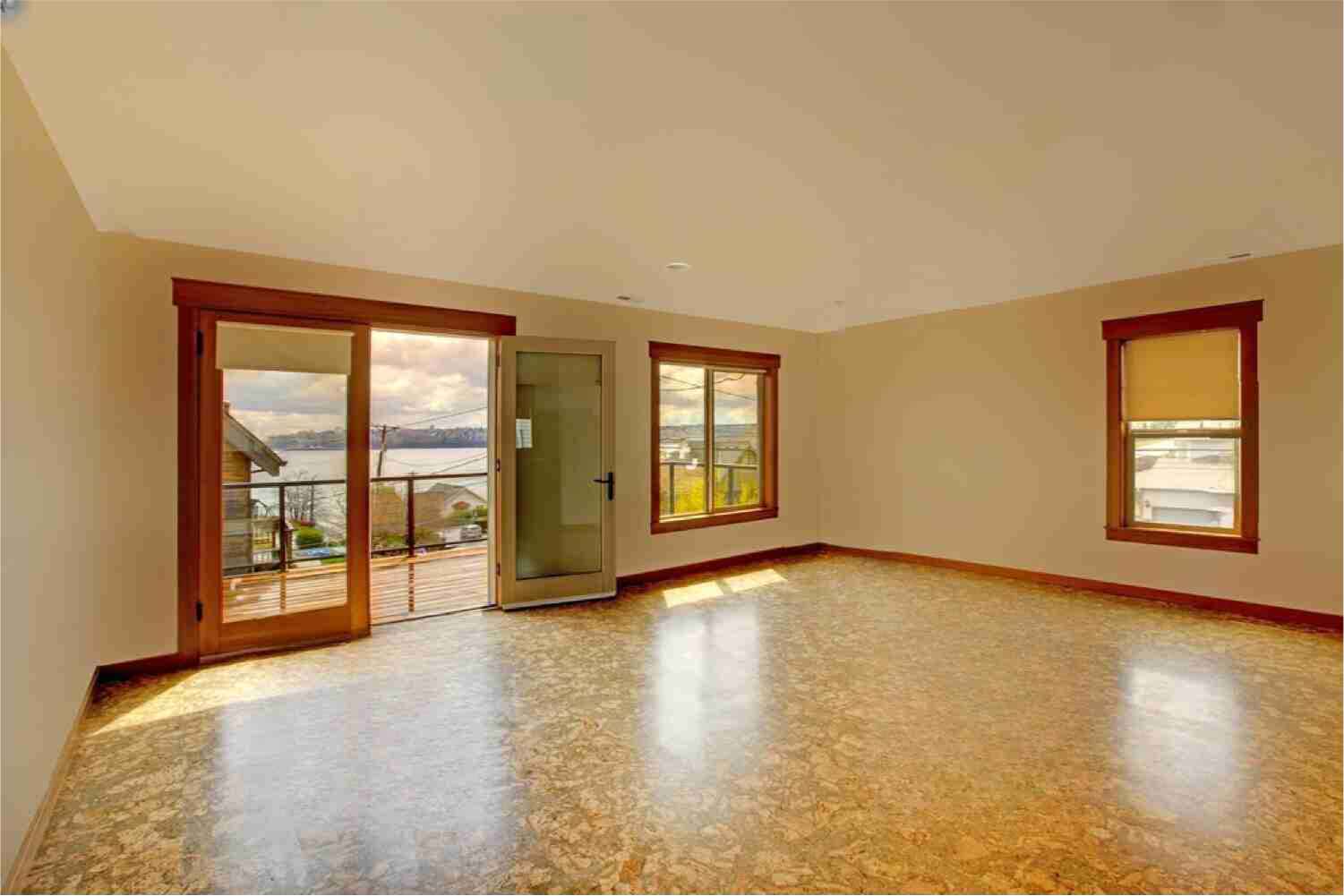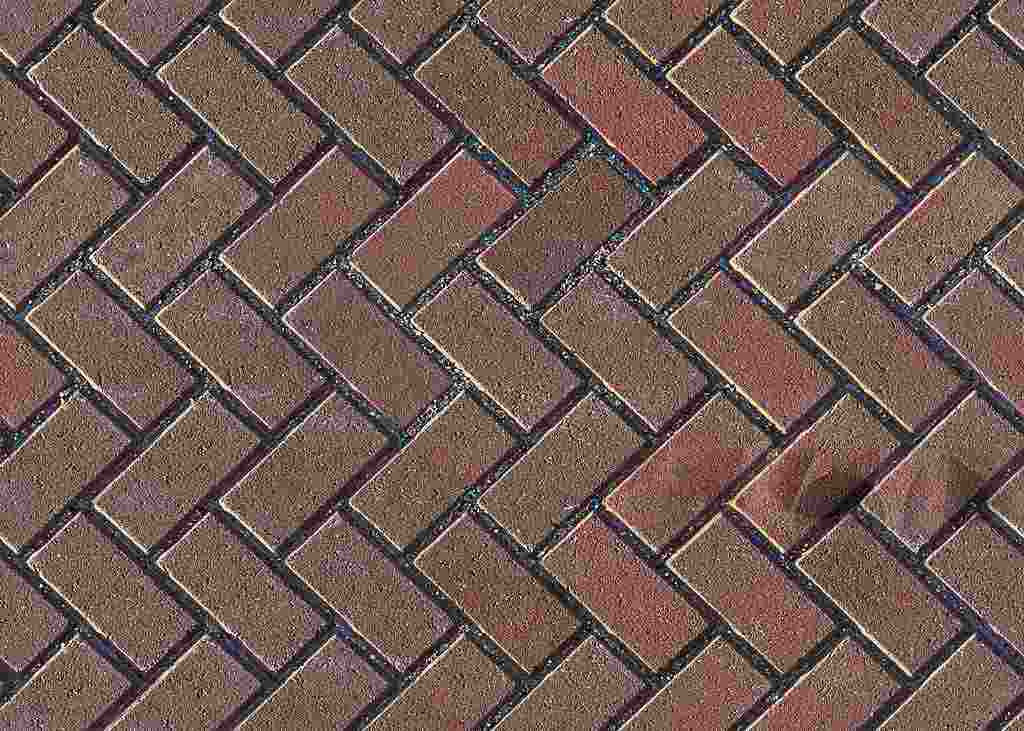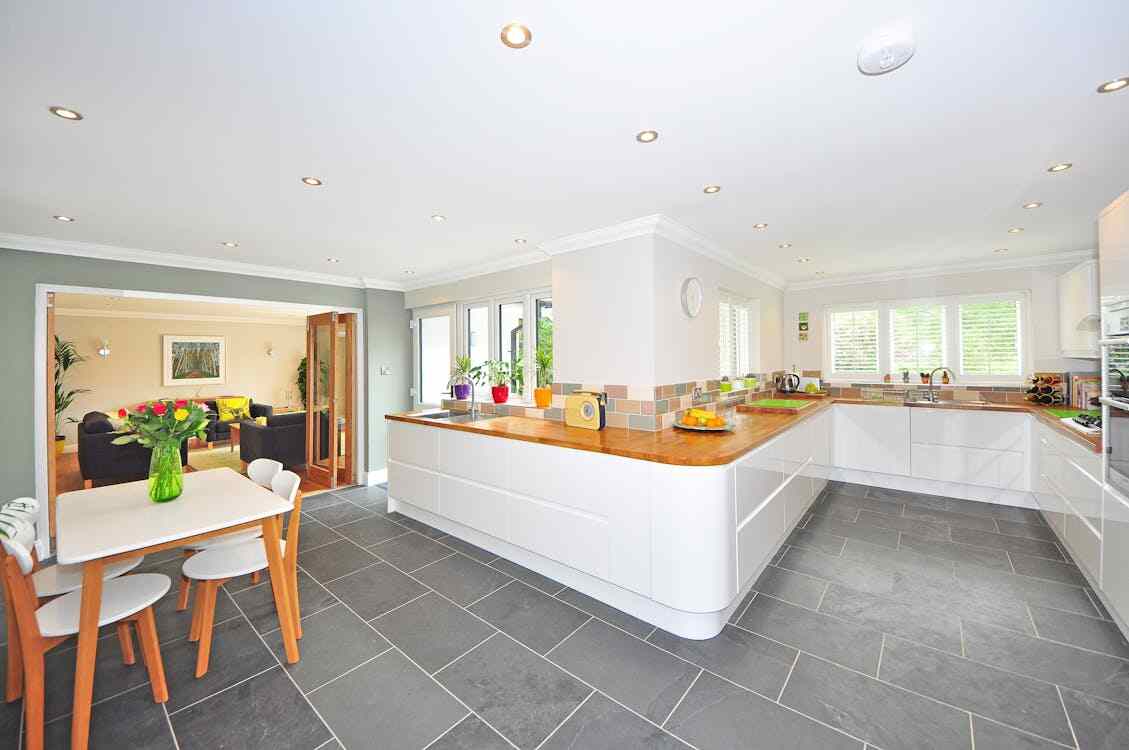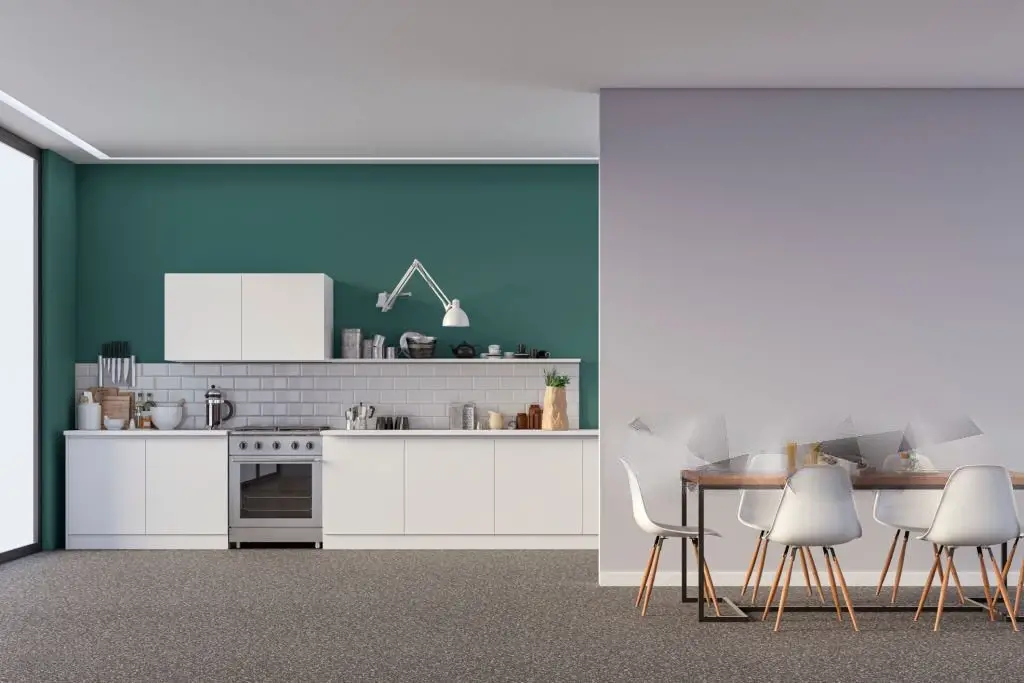Introduction
Installing new kitchen flooring is a major project! It completely transforms your kitchen space. So choosing the best flooring for the kitchen is a big decision.
The right kitchen floor amps up your space’s aesthetics and offers high-end functionality to tackle daily wear and tear. Thus, a wise decision is mandatory. You should sync the selection of the best designs with the best materials.
There are many options available – laminate, vinyl, ceramic tiles, porcelain tiles, cork, natural stone, and hardwood. But which one is best for you? It depends on certain crucial factors, such as your budget, sub-floor’s condition, aesthetic preferences, etc.
You’re at the right place! This guide explores the ten best flooring options. It also elaborates upon the crucial factors you should consider while buying kitchen floors. So, let us explore the foundations of kitchen floor styles together!
How to Choose Kitchen Flooring Material?
Deciding the best flooring for the kitchen is a cumbersome task considering the options available. Each type of flooring comes with its unique features and maintenance needs.
You can consider the following factors if you are into refreshing your kitchen with new flooring! So, let us find an option that matches your home’s aesthetics and daily demands.
Durability
Choose durable options that stand the test of time. Choose flooring that tackles the usual kitchen challenges like exposure to heat, moisture, spills, and foot traffic.
You can go for prefinished wood kitchen flooring. It works well for busy, spill-prone areas. Or you can consider using ceramic tiles. They are ideal for resisting scratches and dents from frequent cooking.
Overall, you need to select materials that maintain their appearance and functionality despite the daily wear and tear.
Water Resistance
Kitchen floors have the highest potential to face water splashes or oil spills regularly. Water damage can cause the flooring to warp, discolor, or stain. It also puts your floor at a high risk of mold or mildew growth.
Thus, you must look for the water resistance feature while choosing kitchen flooring.
Flooring options that are water-resistant and offer good grip even when wet also help prevent slips and falls. For instance, materials like porcelain or ceramic can handle moisture and spills.
Style
You need to align kitchen floor choices with your lifestyle and home’s aesthetic. Consider the overall design, atmosphere, and color palette you envision for your kitchen.
Aim to choose colors that harmonize with your walls, cabinets, and countertops. Look for eye-catching styles if you want to make a bold statement. Neutral tones like off-white, soft beige, or grey are ideal for those who prefer a more subdued background.
Your kitchen flooring should be something you feel good about. Do not overlook the impact of textures and patterns.
Budget
It is better to explore floors within your budget. You can seek estimates from various best kitchen flooring sellers and get a clear picture of the quality, pricing, and types available. However, it doesn’t mean you opt for the cheapest options as it is also not the best strategy.
You need to strike a healthy balance between quality and affordability. Ensure your new flooring is both visually appealing and durable. Consider alternatives if anything falls out of your budget.
Check if any sales, clearance items, or bulk purchase discounts are going on! Sometimes, these deals allow you to purchase higher-quality flooring at a low cost.
10 Best Kitchen Flooring Options
Hardwood Flooring
Hardwood kitchen floorboards are made from timber. Other common and popular hardwood types include teak, oak, iroko, sapele, and meranti. It brings a fresh, Scandinavian vibe to any space. Hardwoods that add character and personality are the new trend. Most people nowadays focus more on character elements than the resale value.
The 2023 U.S. Houzz Kitchen Trends Report concluded that almost 1/3rd of renovating homeowners have opted for hardwood kitchen flooring. Thus, it is one of the famous classic choices of 2024.
Hardwood kitchen floors fall under two categories: solid hardwood & engineered hardwood. Solid hardwood is more expensive than engineered hardwood. Thus, going with engineered hardwood is wise. You can go for patterns such as herringbone and chevron if you want elegant flooring. They add a cool twist to traditional wooden floors.
Pros
- Attractive
- Durable
- Easy to clean
Cons
- Costly
- Lack of water resistance (you need to choose engineered hardwood to bypass this con)
Vinyl Flooring
It is a synthetic kitchen flooring manufactured from PVC (polyvinyl chloride plastic). Vinyl can be modified with different textures and colors to mimic certain styles like wood, ceramic, and stone. Small heated PVC pieces are pressed into thin layers to create thin and flexible vinyl sheets. Then, it is modified into tiles or planks.
Vinyl consists of four layers, i.e., a urethane top coat, a clear vinyl layer, printed design or patterns, and a felt or fiberglass backing. Vinyl is easy to clean, and install, and is available in various colors and designs. However, you should always check the quality of vinyl flooring. Avoid poor-quality vinyls that emit certain toxins in the air.
Pros
- Water-resistant
- Easy to install
- High friction
Cons
- Can break easily
- Can emit toxic VOCs if bad quality
Natural Stone Tile
Natural stone tiles are made of mountain-borne minerals such as granite, marble, limestone, travertine, and sandstone. These tiles are directly cut from stone blocks. They have an advantage in warm climates. They also stay cool and easily manage indoor temperatures during the sweltering summer months.
Stone floors also help prevent dust and allergens. However, choosing this kitchen flooring might be pricey. The pricing may range from $8 to $50 per square foot. You should choose stone kitchen flooring based on its capability to tolerate underfloor heating.
Pros
- Easy to clean
- Long-lasting
- Control allergens or dust
Cons
- Expensive
- Might be slippery
Ceramic Tile
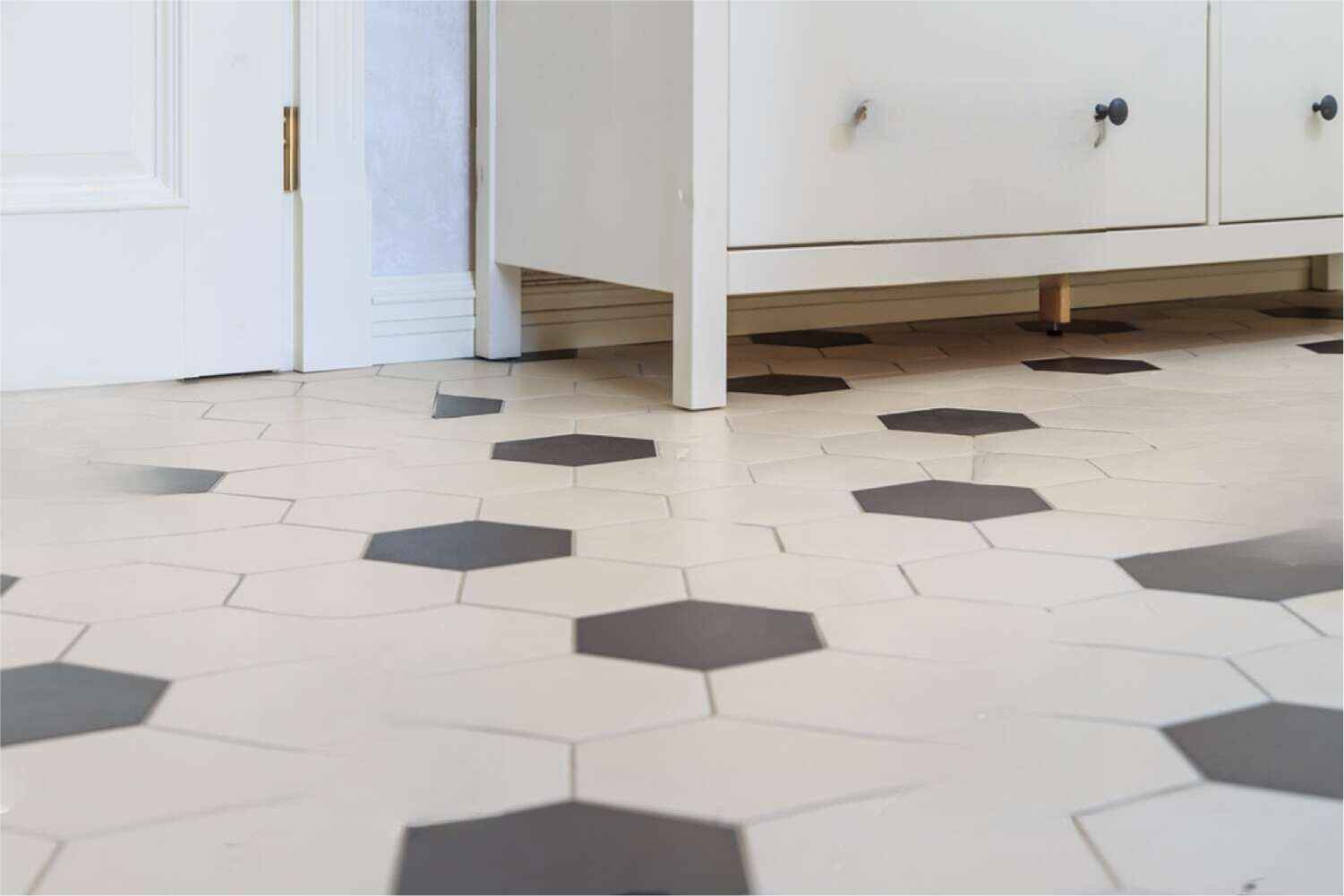
Ceramic tiles are thin slabs of inorganic materials like clay or water. These slabs are hardened at high temperatures in a kiln and painted with glaze. Glazing makes them brighter tiles with a glasslike surface. They are available in a variety of stylish patterns. They might come in two major variants. It includes gloss-finish and matte-finish ceramic tiles.
The glossy tile mirror-like sheen adds a modern look to your kitchen. Their reflective surface may also give the illusion of a bigger kitchen space. However, these tiles may become slippery when wet. On the contrary, you can choose a semi-matte finish or lappato ceramic tile kitchen flooring if you want an ideal mix of both variants.
Pros
- Durable
- Water-resistant
- Easy maintenance
Cons
- Can crack easily
- Cold material
Bamboo Flooring
Harvested bamboo is used to create kitchen floors. It is a great choice for eco-friendly lovers. It is also attractive and durable. However, these floors are prone to dents and scratches.
Bamboo floors come in three varieties. It includes natural, stained, and caramelized bamboo floors. You can also consider buying 100% waterproof rigid core bamboo flooring. It is also one of the easier-to-clean materials.
Ensure your bamboo kitchen flooring ideas complies with CARB Phase 2 standards. Avoid horizontal and vertical bamboo floors due to their weak structure.
Pros
- Eco-friendly
- Budget-friendly
- Easy to maintain
Cons
- Prone to water damage
- Limited style or shade variants
Laminate Wood Flooring
Laminate floors consist of four layers: high-resolution photo, melamine wear layer, melamine backing layer, and a dense core board. This material requires an underlayment that acts as a muffled sound and a moisture barrier. You must check for the texture, color, finish, and shape of laminate floors while buying them.
However, you need proper care and maintenance due to the involvement of the wood-composite layer. Also, you need to ensure their correct installation. Ensure you secure tight seams between the planks. Proper installation without gaps also helps protect moisture penetration until the core of the laminate.
You have two options for installing laminate floors in kitchens. Most of the laminate floors come with a tongue and groove installation system. It requires you to snap the boards together. Other options include direct installation of laminate floors on a clean, flat base floor.
Pros
- Budget-friendly
- Attractive
- Easy to clean
Cons
- Cannot be refinished
- Lack of moisture-proofing
Concrete Flooring

Concrete is a natural flooring material that consists of water, a binder, and a filler. The binder could be slag cement, Portland cement, or fly ash. The filler combines everything from crushed glass and river stones to gravel and sand.
Nowadays, choosing polished concrete kitchen flooring is becoming famous. It is an ideal blend of glamour and practicality. The installation of polished concrete floors includes three stages. Diamond grinding is the first stage of preparation.
The second step includes hardening the fresh concrete surface with a densifier. Then, a matte or glossy finish is given on the diamond polishing pads. The last step involves adding a concrete sealer to prevent staining and protect concrete from scuffs.
Pros
- Design flexibility
- Durable
- Easy maintenance
Cons
- Slippery
- Might not resist stains
Cork Flooring
The majority of the cork used for flooring comes from the bark of the Quercus suber or the cork oak tree. It is also among the eco-friendly or ‘green flooring’ options. Then, the ground material is mixed with resins and cut into floors.
The unique structure of the floor provides a cushioning effect to your foot. It is comfortable, safe, durable, aesthetically pleasing, and the best kitchen flooring option.
However, it is more prone to damage than other types of floors. So, you may need to take care of your pets’ trimmed nails. Also, there is a need to shift your furniture and appliances so they won’t leave permanent indents.
Pros
- Soft & comfy
- Anti-microbial
- Durable (depends upon the quality)
Cons
- Lack of waterproofing
- May need refinishing frequently
Brick Flooring
Bricks are warm and contemporary kitchen floor ideas. This flooring is thinner than the standard bricks. Clay pavers are used for brick flooring. The type used indoors is composed of several different clays, including kaolin (China clay), which makes the floor more attractive.
They are suitable for installation on concrete slabs. Homeowners and architects alike are turning to brick kitchen flooring ideas for their interiors. It also offers unmatched durability, practicality, and extraordinary design flexibility.
Pros
- Durable
- Budget-friendly
- High friction
Cons
- May not be comfy
- Lack of moisture-resistance
Linoleum Flooring
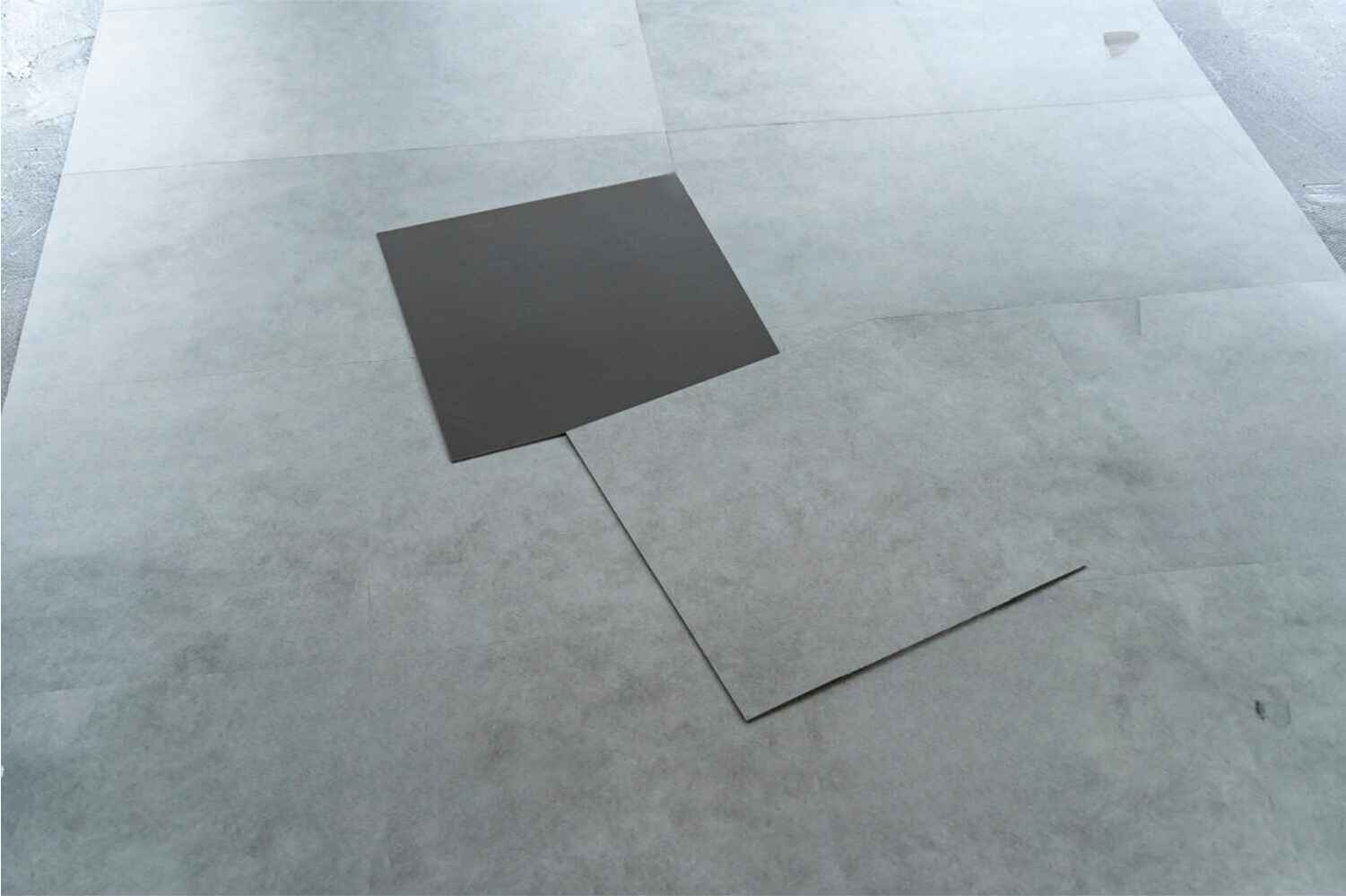
Despite being out of vogue for so long, linoleum is making a comeback thanks to its eco-friendliness. It consists of natural materials, including wood resins, flour, linseed oil, and pigments.
Dust and dirt repel from the surface of linoleum, making it a hypoallergenic flooring option. There are no hazardous VOCs (volatile organic compounds) in it.
The types of linoleum kitchen floor ideas include linoleum sheets, linoleum tiles, and planks. The benefits of linoleum floors include scratch resistance, eco-friendliness, durability, retro vibes, easy maintenance, and affordability.
Pros
- Durable
- Water-resistant
- Affordable
Cons
- May not resist scratches
- May turn yellow over time
5 Popular Kitchen Flooring Ideas
Checkerboard Pattern
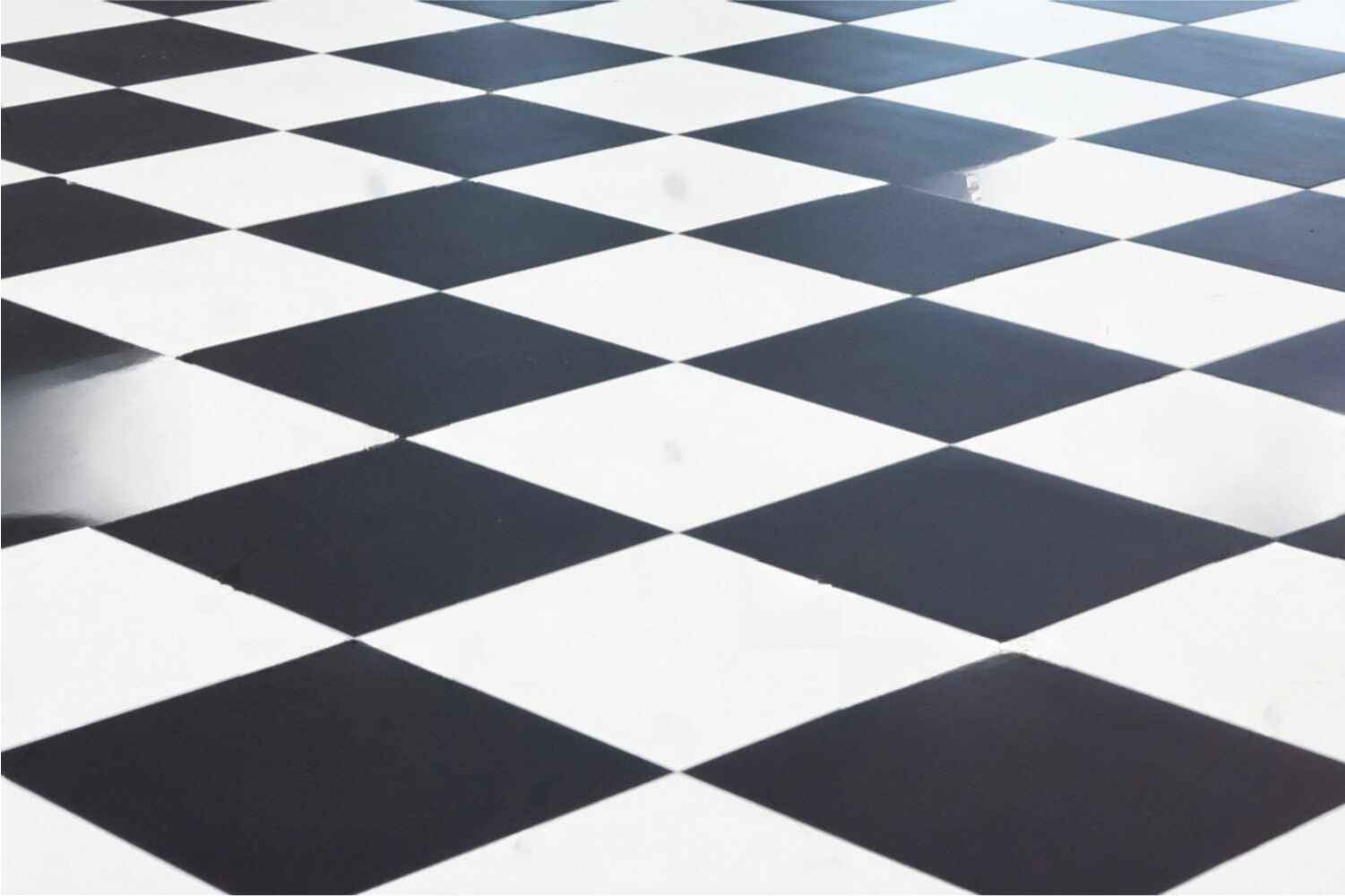
Checkerboard patterns have endless varieties. It includes a classic harlequin, retro checkerboard, Victorian refresh, Italian alr, etc. Checkerboards have alternating squares parallel to the focal wall of the room.
On the contrary, harlequins have squares oriented diagonally like diamonds. White squares best pair with the colored or black squares in a classic checkerboard pattern.
Dark Stone
Use dark shades of stones like black slate tiles to inject drama. However, you should choose high-quality stone as it can influence the frequency and cost of its maintenance.
Slate flooring also resists fire and gives a distinctive look from other flooring materials. Even though slate floors are not new, they are still popular.
Trendy Terrazzo
This texture is also making a comeback as the best kitchen flooring. However, its origin dates back to Italy, when the craftspeople realized the significance of inserting marble chips in concrete.
Its colorful, textured and playful appeal makes decorative speckled flooring a great alternative to plain concrete flooring. The benefits of terrazzo tiles include customization, durability, eco-friendliness, and low maintenance.
Wood-Look Tiles
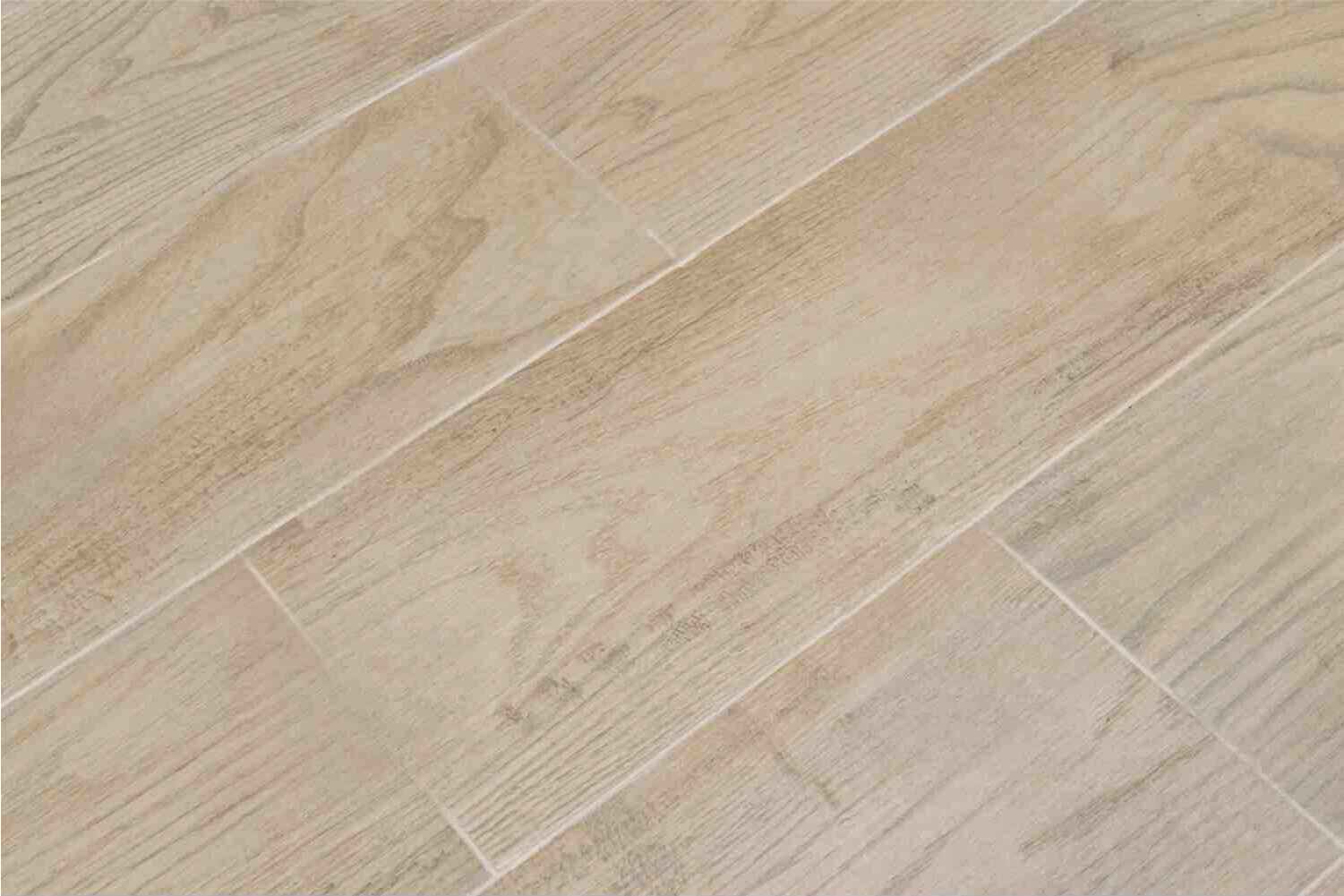
Wood-look tiles offer a subtle and charming country touch in the kitchens. The hardwood flooring with the gingham-print shades and iron & wood barstools look attractive.
You can add patterns like herringbone to add coziness and warmth to the kitchen space. As the name says, the design of these ceramic or porcelain tiles mimics real wood.
Gray Marble
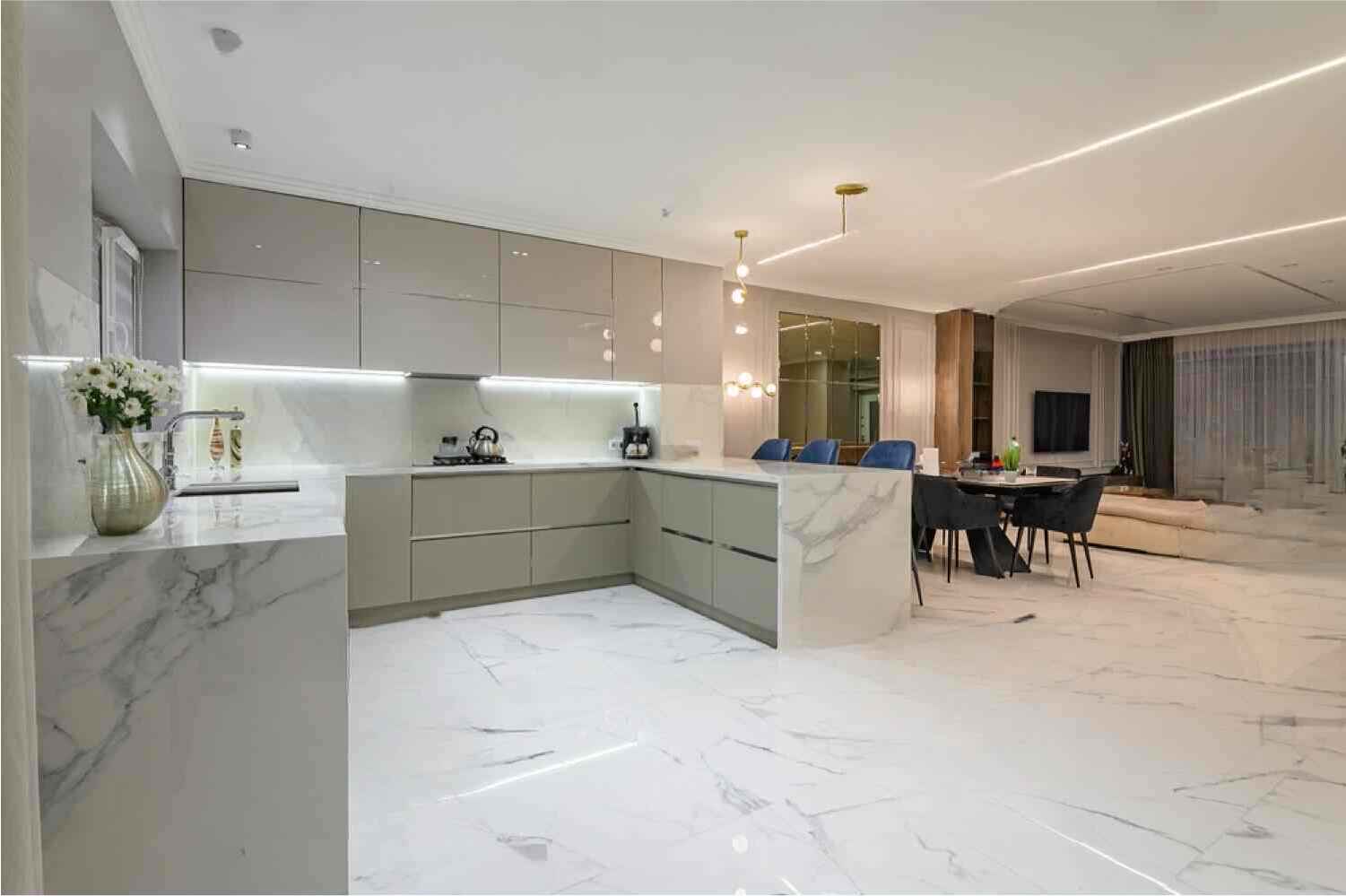
Adding polished gray marble tiles to the blue cabinetry will maintain a cool color palette. Its soft color palette blends with any kitchen decor style, from traditional to contemporary. You can also create a monochromatic color scheme with gray marble kitchen flooring ideas.
Which One Is Better For Your Kitchen: Hardwood Or Tile?
Both these flooring options come with their pros and cons. Tile flooring is a cost-effective option for homeowners on tight budgets. You can also customize the tile floor to an exotic wood-like floor.
However, tile grouts are a major demerit of this floor. They are harder to clean. They also discolor quickly over time and clog stubborn dirt. On the contrary, hardwood floors are easier to clean and are warmer on feet. They also make your kitchen space look larger than tile floors.
Yet, there are various ways to maintain tile kitchen flooring as well. The choice between hardwood and tile kitchen floor ideas also depends upon the end finish you desire. Wood-looking tiles are also considerable and may have greater benefits than real hardwood flooring.
They are more eco-friendly than hardwood floors due to reduced deforestation and the use of recycled materials. Tiles are also pet-friendly and moisture-resistant. You may consider wood flooring if your kitchens are regularly sealed and maintained (you also do not have pets!).
Each flooring has its pros and cons. We have made the task easier for you below:
- Care & Maintenance: It is a tie!
- Costing: It depends upon the quality and features.
- Ease of installation: Wood flooring
- Durable lifespan: Wood flooring
- Comfort: Wood flooring
- Appearance: It is a tie!
- Best heat & water resistance: Tile flooring
- Eco-friendliness: Tile flooring
You should select the best flooring for kitchens depending on your aesthetic preferences, lifestyle, and priorities.
Conclusion
In conclusion, you should now better know the varieties of best kitchen flooring available to choose from. The guide has also mentioned 5 popular kitchen floor ideas to make informed decisions. No matter what type you choose, ensuring quality and giving proper care & maintenance are among the top crucial factors to keep its longevity.
FAQs
Q.1 What is the quality of an ideal kitchen floor?
You need to check two features primarily, i.e., aesthetics and durability. Ensure your flooring is easy to maintain and withstand various kitchen spills, moisture, and other liquids.
Q.2 What color floor makes a kitchen look bigger?
Light-colored floors help make the kitchen look bigger than the darker shades. Furthermore, you can offer the illusion of maximizing kitchen flooring space by implementing lines, implementing reflective materials, using glass-paneled cabinetry, and minimizing clutter.
Q.3 Should the kitchen floor be lighter or darker?
It is a subjective choice and majorly depends on what aesthetics you want to match it with. You can decide based on the pros and cons of each floor.
Q.4 What is the safest flooring to install?
The safest floors include natural linoleum, solid wood, bamboo, cork, stone, and tiles. You can also evaluate any sealers, finishes, or adhesives for toxicity and VOC emissions.
Q.5 How long should kitchen flooring last?
The different types of flooring can last as long as 25-40 years depending upon the quality, your maintenance efforts, and the damage it has faced.



